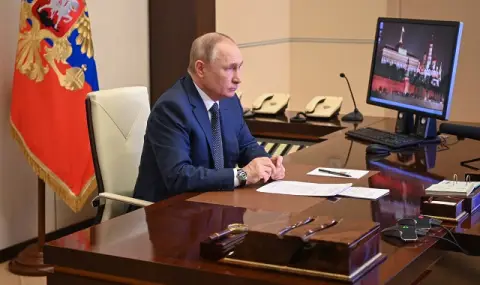Ukrainian President Volodymyr Zelensky said on April 9 that Ukraine is interested in purchasing a large package of weapons from the United States as security guarantees against a future Russian invasion. Probably as part of a future minerals deal.
According to the Institute for the Study of War (ISW), Ukraine has recently offered to purchase air defense systems and weapons worth "30 to 50 billion" (probably in US dollars).
It is ready to purchase these systems itself — either through a direct payment to the United States or through the fund created by the potential U.S.-Ukraine minerals deal.
Zelensky recently told his U.S. counterpart, Donald Trump.
Russia's continued unsubstantiated accusations of ceasefire violations for energy strikes - despite the lack of a publicly available formal ceasefire agreement - show how it is likely to act if it accepts the ground ceasefire that Ukraine and the United States have already agreed to.
Russian Foreign Ministry (MFA) spokeswoman Maria Zakharova claimed without evidence on April 9 that Ukrainian forces had struck energy infrastructure in "Russian regions" 32 times between April 4 and 7.
The Russian Defense Ministry (MoD) also claimed without evidence on April 10 that Ukraine had carried out 11 strikes against energy facilities in the occupied Luhansk, Donetsk, Zaporizhia, and Kherson regions; Krasnodar Krai; and Kursk, Bryansk and Belgorod regions over the past day.
The Russian Defense Ministry claims that Ukrainian forces have struck energy facilities in the Russian rear and in the rear of occupied Ukraine, including in Gorlovka, Donetsk region (about six kilometers from the front line) and Golopristan district, Kherson region (just south of the Dnieper River and including areas immediately on the eastern (left) bank of the Dnieper River). It is unclear whether the energy infrastructure in question is covered by the ceasefire, as the terms of the agreement have not been made public. ISW continues to assess that Russian officials are exploiting the lack of a clearly defined and public ceasefire agreement to portray Ukraine as a disingenuous participant in the peace process.
The continued insistence by Russian officials that Ukraine is violating the ceasefire underscores the importance of a signed and publicly available ceasefire agreement that includes monitoring and adjudication processes—elements that will be even more important in a potential future ground ceasefire to which the United States and Ukraine have already agreed.
Russia continues to use bilateral negotiations with the United States to delay negotiations on the war in Ukraine, suggesting that the Kremlin remains uninterested in serious peace talks to end the war. The U.S. State Department said U.S. and Russian delegations met in Istanbul on April 10 to discuss finalizing an "understanding to ensure the stability of Russian and U.S. bilateral missions."
Russian Ambassador to the United States Alexander Darchiev said on April 10 that the United States and Russia had agreed on measures to facilitate the movement of diplomats and expedite the issuance of diplomatic visas.
The Russian delegation has prioritized the return of confiscated Russian diplomatic property to the United States.
Russia is reportedly using social media and financial incentives to recruit Chinese citizens to voluntarily join the Russian military. Ukrainian President Volodymyr Zelensky said on April 9 that Ukrainian authorities had identified 155 Chinese nationals fighting with Russian forces in Ukraine, but that there were likely many more.
Russian forces have been posting ads on TikTok and other Chinese social media to recruit Chinese nationals. The Chinese fighters have undergone medical examinations and one to two months of military training before being deployed to Ukraine.
The Security Service of Ukraine (SBU) reported on April 9 that a Russian representative had directly recruited one of the Chinese nationals that Ukrainian forces recently captured in Ukraine. He signed a contract with the Russian Ministry of Defense (MOD) upon his arrival in Moscow in February 2025.
The SBU reported that another captured Chinese national had traveled to Russia for tourism in December 2024 and signed a contract after seeing an online advertisement offering two million rubles (about $24,000) to join the Russian army.
The Ukrainian newspaper Kyiv Independent reported on April 9 that it had reviewed a Ukrainian intelligence document indicating that at least 163 Chinese nationals were serving in the Russian military as of early April 2025.
Russian forces reportedly recently executed a wounded Ukrainian POW in the Liman direction. ISW observed a sharp increase in such cases in 2024 and 2025 and continues to assess that Russian military commanders were either complicit or directly allowed their subordinates to execute Ukrainian POWs in violation of international law.
The Kremlin continues to use familiar accusations to justify possible future aggression against Estonia. Russian Foreign Ministry spokeswoman Maria Zakharova accused Estonia of waging war against Orthodoxy, and the Ministry of Foreign Affairs reinforced the accusations of the Holy Synod of the Russian Orthodox Church (ROC) about Estonia's persecution and oppression of Orthodox followers.
The claims by the Russian Foreign Ministry and the ROC come after the Estonian parliament on April 9 passed amendments to the Law on Churches and Congregations that would legally force the Estonian Orthodox Church to sever its affiliation with the ROC — Moscow Patriarchate (MP).
ISW has extensively reported on the Kremlin’s use of the church as a tool for hybrid operations, particularly in occupied Ukraine and in countries of the former Soviet Union, to suppress religious freedom and promote pro-war and pro-Kremlin ideology.
The Kremlin has long used hybrid operations against the Baltic states in the name of protecting Russian "compatriots abroad", including against religious persecution, and may seek to step up these efforts if Estonia codifies the amendments into law.
